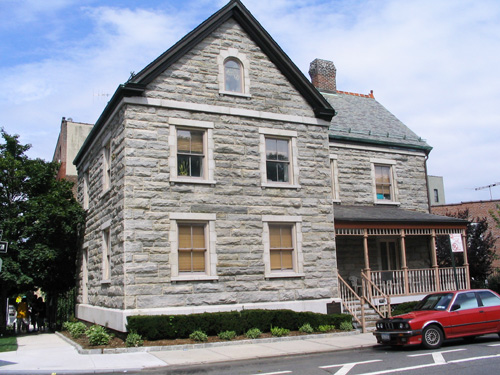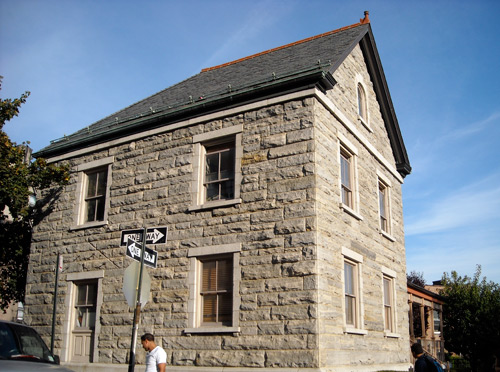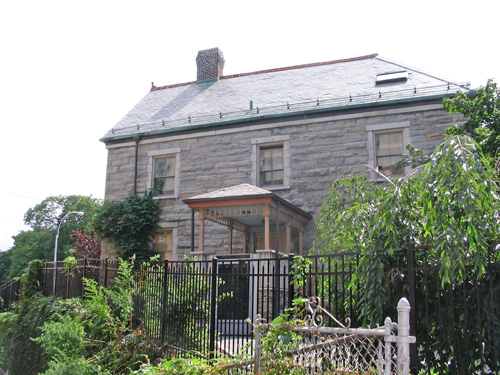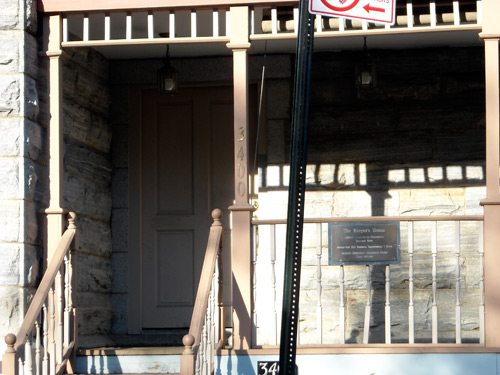Williamsbridge Reservoir Keeper’s House
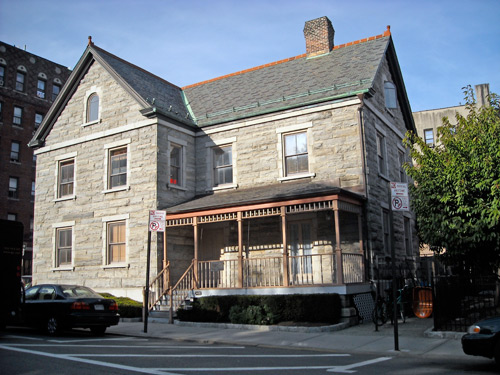
Putnam Place and Williamsbridge Oval
Terence A. Smith (builder)
1889-90
This small cottage, and the neighboring earthen embankment which describes a three-block-long oval south of Gun Hill Road, are the remains of a short-lived and ill-conceived attempt by nineteenth century New York City to supply water to the newly annexed wards of the west Bronx.
From lakes north of White Plains feeding the Bronx and Byram rivers, water was collected in a precursor of today’s Kensico Reservoir, and sent southeast through a channel and conduit. In 1884, the year the pipeline was put into service, excavation began on a receiving reservoir in Williamsbridge. It opened five years later.
But by then construction had been nearly completed on the New Croton Aqueduct, which would add 300 million gallons daily to the 75 million being sent to Manhattan by the original Croton system. When New Croton water began to be piped through the Bronx, the Bronx-Byram’s 15 mgd was reduced to insignificance, a result long predicted by political critics of the Tammany administration, who maintained that the undersized system—which ended up costing two million dollars more than estimated—was nothing but public works patronage in the Tweed tradition.
In 1890, Matthew Mallahan, sometime hotel owner and liquor dealer, was awarded the job of supervising the new reservoir, and housed with his family in a brand-new cottage at the north end of the oval. The L-shaped, cross-gabled building was an ordinary two-and-a-half story residence, built by Terence A. Smith to plans signed by George Birdsall, chief engineer of the New York City Department of Public Works.
Being built of materials intended for the reservoir probably accounts for the one remarkable characteristic of the Keeper’s House, its unrelenting stoniness. The walls are of rock-faced ashlar, revealed by a recent cleaning to be of an unexpected brightness. (The nineteenth-century American architectural pundit, A.J. Downing, insisted that dark stone was inappropriate for small cottages like this.) Even brighter is the smooth granite used at the foundation and in a bandcourse under the eaves, in window and doorframes, and in the irregular voussoirs of round-headed windows in each gable.
The Bronx-Byram supply was made inactive in 1919, and the Williamsbridge Reservoir, under its keeper’s eyes, became an informal neighborhood swimming hole until drained in 1925 and officially turned over to the Parks Department in 1934. Robert Moses, typically ambitious, proposed using the inner slopes of the oval to seat 100,000 spectators in dual amphitheatres overlooking running tracks and swimming pools. However local consternation at the size of the project led to the park being confined to playgrounds, playing fields and tennis courts, reached by an arched tunnel which passes through the original reservoir wall.
Unoccupied until 1946, the keeper’s house passed into private hands. More recently purchased, appropriately, as headquarters for the Mosholu Preservation Corporation (and Norwood News), it was designated a Bronx landmark in 2000.
David Bady
Photographs:
Abigail McQuade and David Bady

